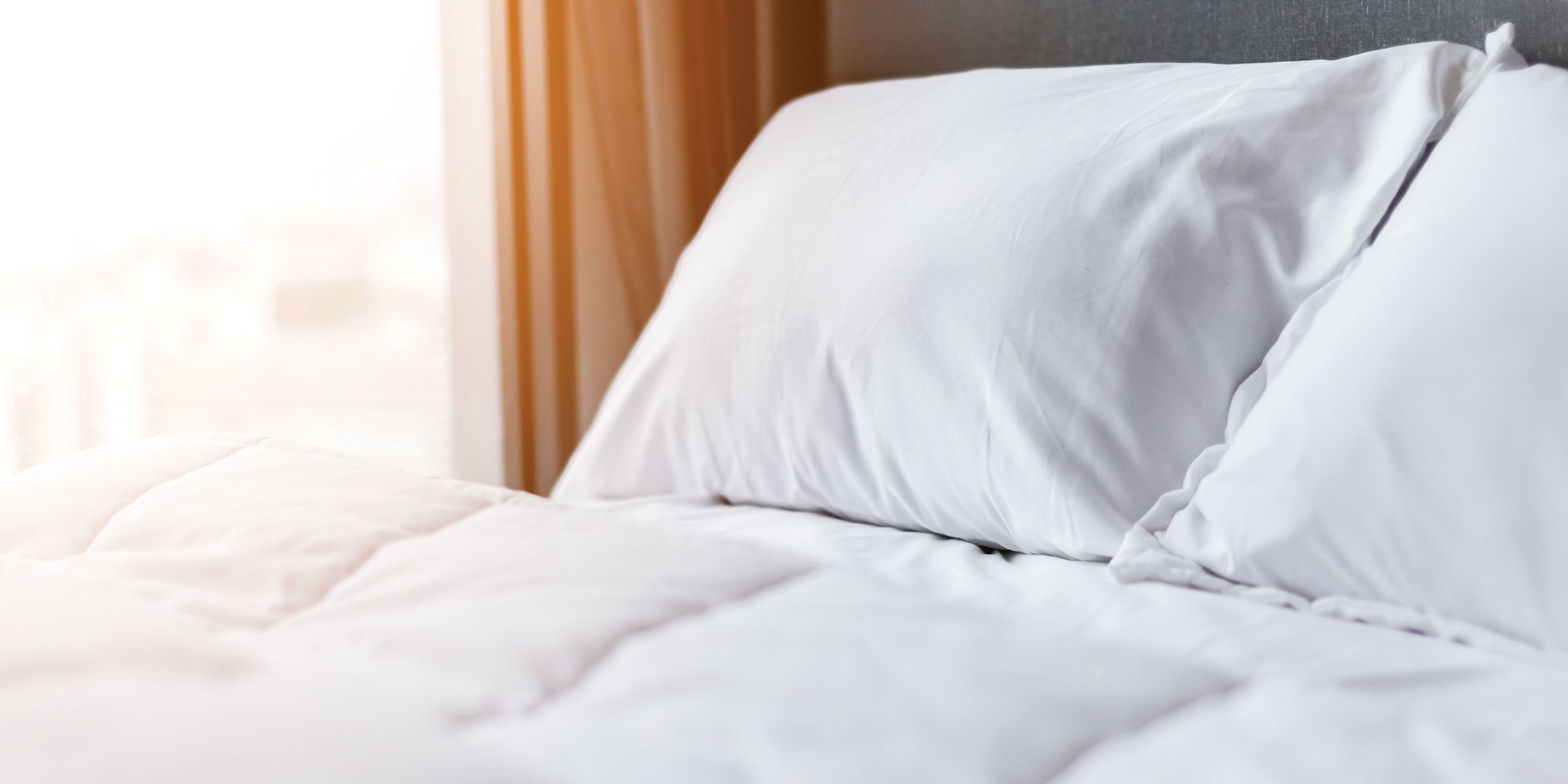PILLOW TALK

Get a Better Night’s Sleep with the Help of Proper Support
A new pillow promises a good night’s sleep and sweet dreams, but how do you know which one is right for you? The answer lies in how you sleep. Different sleeping positions – back, side, tummy or a combination of the reposes – call for differing types of pillow support.
Like a quality mattress, a pillow cushions and aligns your head, neck and spine to maximize comfort and minimize pain throughout the night. It keeps your head in line with your spine: If your head is too high or too low relative to your spine, you can rise to vexing neck and back pain. Copious pillow products have flooded the marketplace; thankfully, most are advertised for specific sleeping positions. Pillow filling, loft (or height), temperature and price are just a few factors to keep in mind when shopping for your perfect pillow.
Sleep positions
 SIDE SLEEPERS
SIDE SLEEPERS
According to the Sleep Foundation, more people sleep on their side than on their back or stomach. Side sleepers rest best with a medium to high loft pillow (about 4 to 5 inches thick) and dense fill materials that cushion the head, neck and spine. Saatva, a premium bedding purveyor, recommends a firm pillow filling for side sleepers, like down, memory foam or latex. The Sleep Foundation ranks Saatva’s Latex Pillow as the best overall pillow ($165-$185) for all sleepers and recommends the Eli & Elm Cotton Side-Sleeper Pillow ($109-$123) for side sleepers.
 BACK SLEEPERS
BACK SLEEPERS
Second in popularity is the back sleeping position. A smaller gap exists between the head, neck and mattress for back sleepers, so a lower pillow loft of 3 to 4 inches best buoys their body. Back sleeping promotes spinal alignment and even reduces fine lines and wrinkles since your face doesn’t press into the pillow; however, snoring is a common problem. In this recumbent position, the tongue can fall backward into the throat and obstruct airflow, causing sonorous breathing. Adding an extra pillow or turning on your side alleviates snoring. For back sleepers, the Sleep Foundation recommends a cooling memory foam or a breathable down pillow fill, such as the Helix GlacioTex Cooling Memory Foam Pillow (low loft at $99) and the Brooklinen Down Pillow ($102).
 STOMACH SLEEPERS
STOMACH SLEEPERS
Though it squelches snoring, stomach sleeping is the most stressful sleep position. It upends your spinal alignment since your head cranes to breathe while your body sinks into the mattress and curves your spine. Tummy sleeping foments facial lines and wrinkles because your face presses into the pillow from many angles. If you are an inveterate stomach sleeper, choose a pillow with a low loft of up to 3 inches or sleep without a pillow. A soft and cool pillow fill like down or shredded memory foam works best for stomach sleepers. Forbes magazine ranks the Bluewave Bedding Hyper Slim Gel Memory Foam ($36 Amazon), a thin memory foam pillow made from cooling material, as its top overall stomach sleeping pick.
 Pillow coverings
Pillow coverings
Just like pillows, you’ll want to buy a pillowcase that has a weave and fabric that complements your sleeping style. Pillows and pillowcases come in three sizes: standard, queen and king. Whether made of percale cotton, satin, flannel, linen, microfiber, bamboo or silk, pillowcases offer unique temperature and texture benefits. If you are a hot sleeper, a percale cotton pillowcase offers you natural cooling and a pleasing, crisp texture. More expensive, silk pillowcases have a soft luxurious feel and a smooth texture that is gentle on your hair and face. Derived from the cocoons of silkworms, silk doesn’t absorb moisture, consequently not drying your face and offers appealing temperature-regulating benefits.
 Caring for your pillows
Caring for your pillows
Pillows typically have a shelf life of around two years and then it’s time to invest in a new one. You can keep your pillow in healthy shape with regular washing and by covering it with dust mite and allergy-proof pillowcases. Pillows are notorious for hosting dust mites, which are microscopic insects that trigger rashes and allergies. To kill them, wash your pillowcases weekly and your pillows quarterly in hot water. Heating your pillow on high heat in the dryer for 10-15 minutes eliminate mites.
Finding the perfect pillow to buoy your body for a peaceful night’s sleep has never been easier. Understanding your sleep style and that of your partner is a great place to start for your next pillow-shopping expedition. Sweet dreams!
The 411 on pillow fillings
- Down: Feathers from the chest and belly of birds. Soft, contours the neck and head well, durable, but expensive.
- Feather: Feathers from the wings and backs of birds. Moldable, lightweight and affordable, but flattens and absorbs heat.
- Memory Foam: Made of synthetic materials. Comes in block or shredded forms for support and moldability, contours head and spine well, doesn’t clump and works for many sleeping styles, but expensive.
- Latex: Obtained from rubber tree sap. Comes in block or shredded forms for support and moldability, breathes well, environmentally friendly and supports many sleeping styles, but expensive.
- Polyester: Usually less expensive, non-allergenic and resistant to mildew; however, may be prone to clumping and matting.
- Cotton: Naturally breathable, moisture- wicking and hypoallergenic, but may clump and need to be replaced more often. ✦
back sleepers, cotton, down, feather, memory foam, Pillow, pillow coverings, pillow fillings, pillow support, polyester, side sleepers, sleeping positions, stomach sleepers







